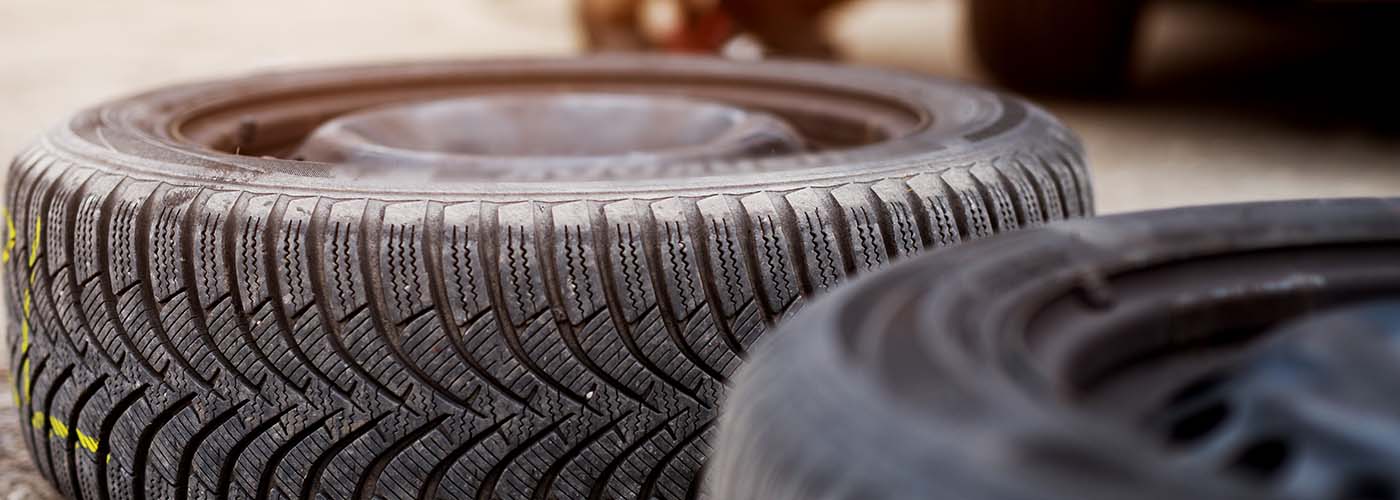Your browser's Javascript functionality is turned off. Please turn it on so that you can experience the full capabilities of this site.
With Canada’s unpredictable winter weather conditions, drivers have come to appreciate the added traction and safety of All-wheel drive (AWD) vehicles. To get the best performance, do you know when to rotate AWD tires?
There’s a common misconception that tire rotation isn’t necessary for AWD vehicles. Some think that since AWD systems constantly deliver power to all four tires, the tires are all wearing at the same rate.
However regular tire maintenance, including tire rotations, is important for all-wheel drive vehicles—in part because different auto manufacturers have developed several variations of AWD systems.
Part-time: In normal driving conditions, one axle receives power. In slippery conditions, the driver can engage the other axle with the press of a button (or lever).
Full-time: All wheels are powered at all times.
On-demand: Vehicle sensors detect slippery road conditions, and automatically deliver power to the other axle until normal road conditions resume.
No matter which AWD system your vehicle has, each wheel position will experience a different degree of steering, weight dispersion and traction. When tires are allowed to run on every wheel position, they wear out more uniformly, decreasing the chance of irregular wear.
Next to checking tire pressure, proper rotation is the second-most important maintenance item for any vehicle, including AWD’s. That’s because tire rotations:
When your tires are in peak condition, you enjoy smooth, safe driving as well as savings with long-lasting tires.
Ensuring that all four tires are as uniform as possible puts less stress on the components of your AWD system. If the difference in diameter between two tires on the same axle is off by even 1/16 of an inch, it’ll mean one tire is spinning at a substantially different rate than its partner. This can cause the AWD system extra stress, and possibly result in failure.
Best practice is to rotate your tires every 8,000-10,000 kilometres, or every other oil change. For rear-wheel drive or AWD/4WD, the rotation pattern goes as follows:
If you have a full-size spare tire, it should be added to your regular rotations. Keeping the spare tire’s tread equal with the others in an AWD or 4WD will prevent damage to the driveline (the mechanism that sends power from the engine to your wheels).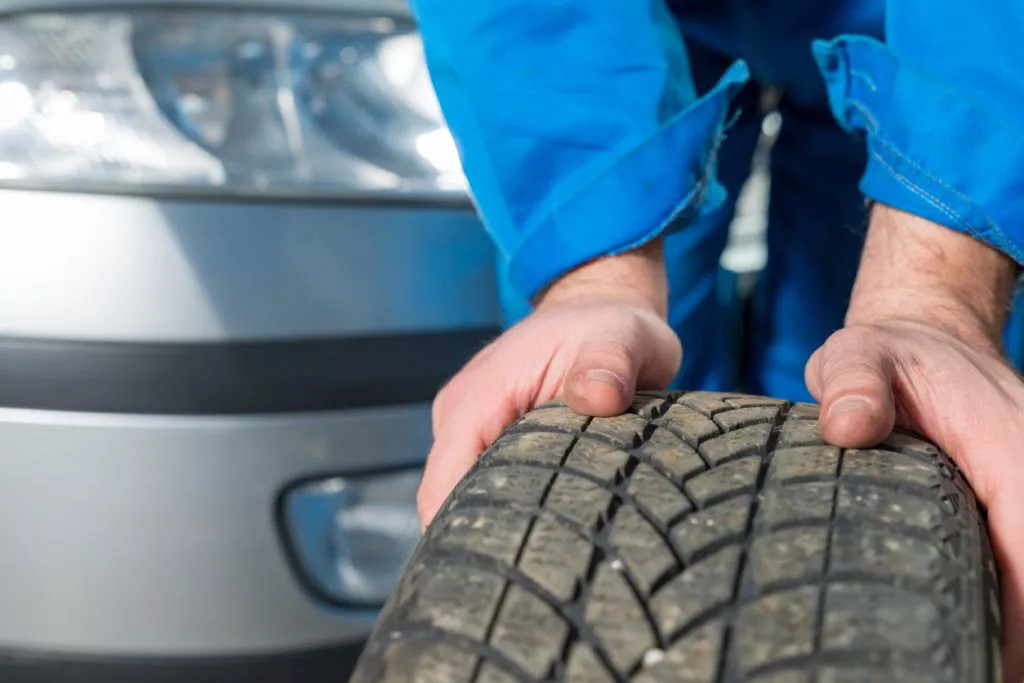
Are you noticing uneven tread wear on your all-wheel drive vehicle’s tires
or think you might be due for a tire rotation?
Find a Location
Was this article helpful?
Click on thumbs up or down to vote.
Do you have to change your tires soon? Whether this task is carried out by you or your mechanic, certain guidelines should be followed; in fact, a proper tire rotation is not done the same on a front-wheel drive vehicle as on an all-wheel drive model.
Swapping the tires on your vehicle is not as simple as removing them, storing them and then putting them back on in whatever order when the season changes! In fact, there is an order to rotating tires on an AWD vehicle and following it is important.
To rotate the tires on an all-wheel drive vehicle, you must follow an “X” pattern: the left front tire will go to the right rear and vice versa; the same goes for the right front tire, which will go to the left rear.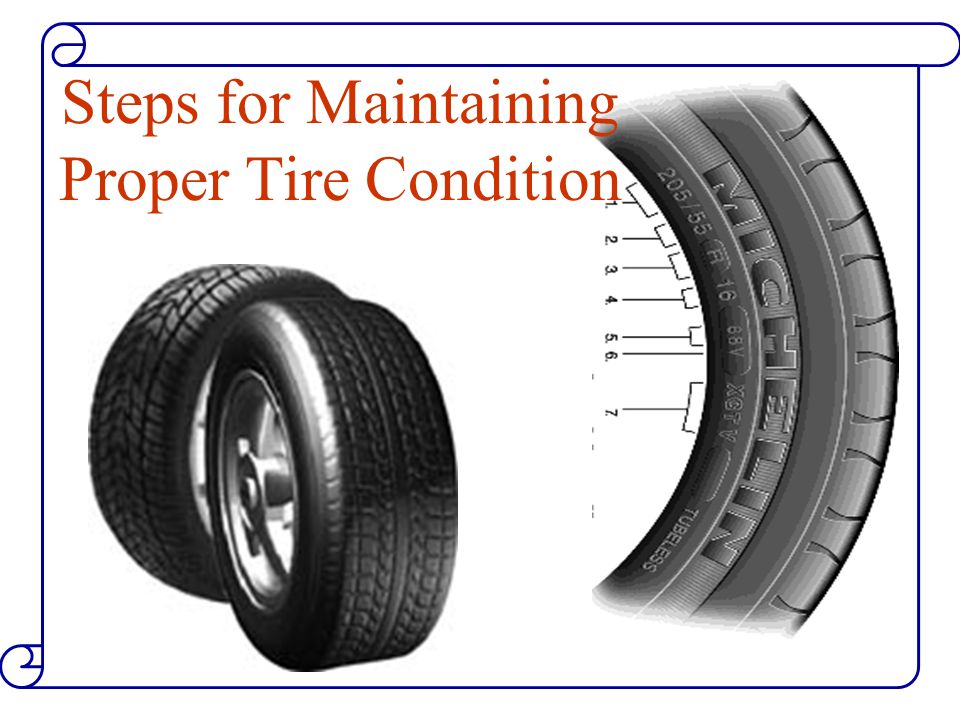
Also, if your vehicle is equipped with a tire pressure monitoring system, it will need to be reset after each tire rotation.
This technique is specific to 4-wheel drive vehicles; the tires will not be rotated in the same way if they are mounted on a rear-wheel drive or front-wheel drive model.
It is also possible to rotate the front tires in an “X” pattern (left front tire to right rear and right front tire to left rear) and put the rear tires on the front while keeping their original side (left rear tire to left front and vice versa on the right).
According to the APA (Automobile Protection Association), tires should be rotated at regular intervals to promote the most even wear possible.
In general, it is recommended that tires be rotated every 10,000 to 12,000 kilometres, which is about the same as when you change your tires. You drive with your 4-season tires, remove them for winter and rotate them when you put them back on.
Caution: replacing only 2 of the 4 tires on an AWD vehicle is not recommended, as it could distort the distribution of driving force between the front and rear wheels, or damage the center differential.
Rotating the tires on an AWD vehicle – like with any other vehicle for that matter – will extend the life of your tires and improve their performance.
Indeed, with the proper tire rotation for the type of drive system the vehicle is equipped with, you reduce the risk of uneven tread wear, thereby extending the life of your tires.
Not only will you enjoy better handling, but you’ll also have a safer ride because you’ll always have tires of similar size, and you’ll avoid the risk of imbalance between the front and rear of the vehicle.
The following diagram illustrates the proper way to rotate tires on an AWD vehicle.
If you are not sure how to rotate the tires on your AWD vehicle, don’t hesitate to have it done at your garage. They will also be able to tell you how worn your tires are!
They will also be able to tell you how worn your tires are!
Find Your Garage
All tires are divided into several types and types. During manufacture, tires are marked with a marking that indicates its main parameters and characteristics. We will not delve into the markings, but we will consider the main differences. Tires are divided into two large groups according to the way the cord is laid inside the tire during its manufacture.
These are radial tires and bias tires. Tires of these two types can be winter, summer and all-weather. Each of these three tires can have a regular or directional tread pattern.
A tire with a regular pattern can be installed on either side of the car, a tire with a directional pattern is installed strictly in the direction of rotation. Regular and directional tread patterns can be symmetrical or asymmetrical. A tire with such a pattern is placed according to the rule of a tire with a regular or directional pattern.
Regular and directional tread patterns can be symmetrical or asymmetrical. A tire with such a pattern is placed according to the rule of a tire with a regular or directional pattern.
It is possible to buy 4 identical tires and assemble them with rims according to the right and left sides of the car. You will get two left wheels and two right ones. Very rarely come across directional tires with an asymmetrical pattern and with an indication of the inside and outside. These tires need to buy two on each side. Two right and two left, but it is better to refuse such tires altogether. They are not convenient to use.
Radial tires are preferable for cord construction. Such tires are more reliable, they withstand heavy loads during movement, and are more stable during deformation. Radial tires wear longer than diagonal tires. Therefore, tires with a diagonal ply are currently practically not produced. Almost all car owners have two sets of tires. For the operation of a car in the winter - these are winter tires, for the summer period - summer.
For the operation of a car in the winter - these are winter tires, for the summer period - summer.
All season tires can be used in both summer and winter. Winter tires can be studded. Such tires are allowed only in a few countries, where snow often and abundantly falls in winter, frost forms on the road surface. This list also includes Russia. All-season, summer and winter tires have their own pattern characteristics that increase the car's handling.
Front or rear wheel drive vehicles can be fitted with different tire patterns. Such tires are installed in pairs on one axle, for example, tires with one pattern are in front, and with another in the back. It is forbidden to install diagonal tires on one axle and radial tires on the other. The dimension must be the same. On all-wheel drive vehicles, the same tires must be installed.
Tires with different treads and dimensions are strictly prohibited. This is due to the design of the transmission. If you operate a car with different tires, then the car's transmission will quickly fail. In addition, driving on different tires becomes dangerous, a car on a slippery road will behave unpredictably.
In addition, driving on different tires becomes dangerous, a car on a slippery road will behave unpredictably.
All car and tire manufacturers recommend changing tires while driving. What is it for? During the operation of the car, all tires wear out unevenly. This is due to several factors. Heterogeneity of the road surface, operating conditions and vehicle transmission device. Therefore, in order to extend the life of the tires and the transmission of the car, the tires must be periodically replaced.
On all-wheel drive vehicles, uniform tire wear is more relevant. Car manufacturers recommend several tire rotation schemes. But in practice, as is often the case, it is impossible or impractical to apply such tire swap schemes. Many car owners never swap tires. Which of course is wrong.
How do you change tires and how often should you do it? The frequency is approximately 8 - 12 thousand kilometers. Therefore, tire swapping can be timed to coincide with the change of tires from summer to winter and vice versa.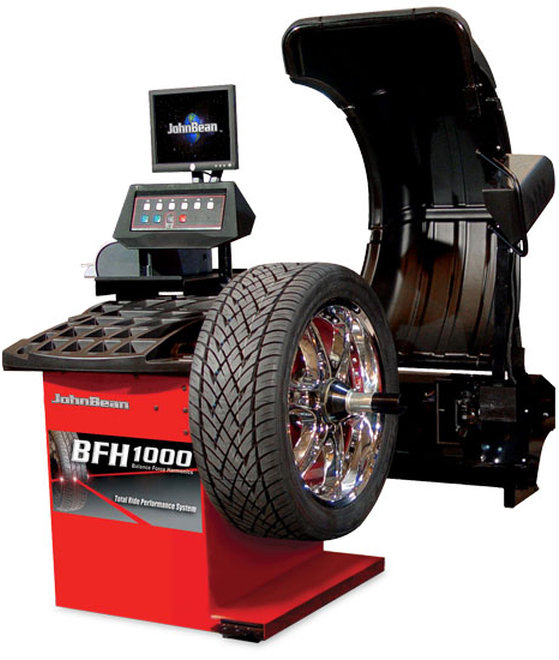 Winter tires can be studded. When using these tires, the studs tilt to one side. This is due to frequent wheel slip.
Winter tires can be studded. When using these tires, the studs tilt to one side. This is due to frequent wheel slip.
Therefore, these tires must be installed in the same direction as they were before. In this case, the tires from the front axle must be put on the rear axle, and the tires from the rear axle should be put on the front axle. In order not to get confused where which wheel was, in a tire shop, the master usually puts a mark on the wheel. If you apply one of the recommended schemes and change the direction of rotation to the opposite when installing the tires, the spikes will begin to tilt in the other direction, their fastening in the tread will weaken and they will start to fly out.
Which, of course, does not justify the expediency of rearranging the tires strictly according to the scheme. There is no point in this, the tires will wear out evenly, but the spikes will almost all fall out. If the tires are not studded, but have a directional pattern, the tires must also be rearranged, from the front axle to the rear, from the rear axle to the front, without changing the installation side on the car. If the tires do not have a direction of rotation, then it is possible to apply a more complex scheme.
If the tires do not have a direction of rotation, then it is possible to apply a more complex scheme.
In this case, the rear tires are moved to the front axle in accordance with the sides. And the front tires are placed on the rear axle, but at the same time the right wheel is placed on the left, and the left wheel is placed on the right. There is another scheme for rearranging wheels. In this scheme, a spare wheel is also involved. The spare must of course be identical. When using such a scheme, the tires wear out a little longer during operation. In this case, the rear tires are rearranged to the front axle without changing sides, the spare wheel is placed on the rear axle on the right, and the right front wheel is placed back on the left. The front left wheel becomes a spare. But such a scheme can be applied if non-studded tires and tires with a non-directional pattern are installed on the car.
If the vehicle is fitted with all-season tyres, it is best to change the tires in the middle of the season. That is, in summer and winter, and not during periods of changing seasons. And it turns out that some wheels constantly "ride" on the snow in front, and the other pair - on asphalt in the summer on the rear axle. Wear will again be uneven. When using a rearrangement scheme without the participation of a spare tire, the latter does not wear out. There is a situation when you have to put a spare tire on the car and drive it.
That is, in summer and winter, and not during periods of changing seasons. And it turns out that some wheels constantly "ride" on the snow in front, and the other pair - on asphalt in the summer on the rear axle. Wear will again be uneven. When using a rearrangement scheme without the participation of a spare tire, the latter does not wear out. There is a situation when you have to put a spare tire on the car and drive it.
The difference between the tread height of the worn tires and the spare wheel adversely affects the vehicle's transmission. But you can still drive several tens of kilometers. It is advisable to drive as short a distance as possible using the spare wheel.
It happens that a car owner has two sets of fully assembled wheels. That is, when replacing tires, you do not need to constantly bead tires. You just need to change the wheels, for example, from winter to summer. Before changing wheels, they must be balanced. Which will also increase their service life, as well as the service life of the car suspension.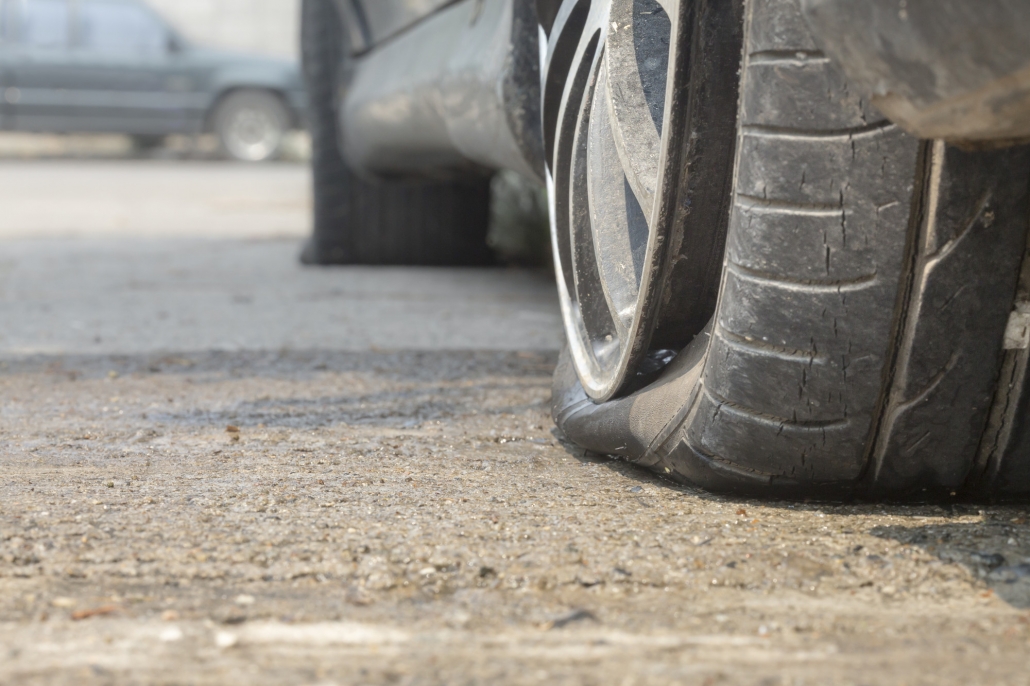 Many car owners balance their wheels only when replacing tires with new ones and then drive their entire life. It is not right. During tire wear, the point of imbalance changes. During wheel spin, for example in deep snow, the weight on the disc may move. Therefore, it is necessary to balance the wheels periodically.
Many car owners balance their wheels only when replacing tires with new ones and then drive their entire life. It is not right. During tire wear, the point of imbalance changes. During wheel spin, for example in deep snow, the weight on the disc may move. Therefore, it is necessary to balance the wheels periodically.
Tires are the car's only connection to the road. To prolong their service life, change tires in places.
Cars are rear-wheel drive, like the BMW 5 Series and Mercedes C-Class, front-wheel drive, like the Toyota Prius and all-wheel drive, these are mainly jeeps like the VW Touareg. If the car is front-wheel drive, the engine torque is transmitted to the front wheels, in rear-wheel drive to the rear wheels, and in full to both the front and rear wheels at the same time. Depending on the drive of the car - front, rear or full, tires will wear out at different rates. The main load falls on the drive wheels - they have more friction force when starting the car and braking, which means they wear out faster.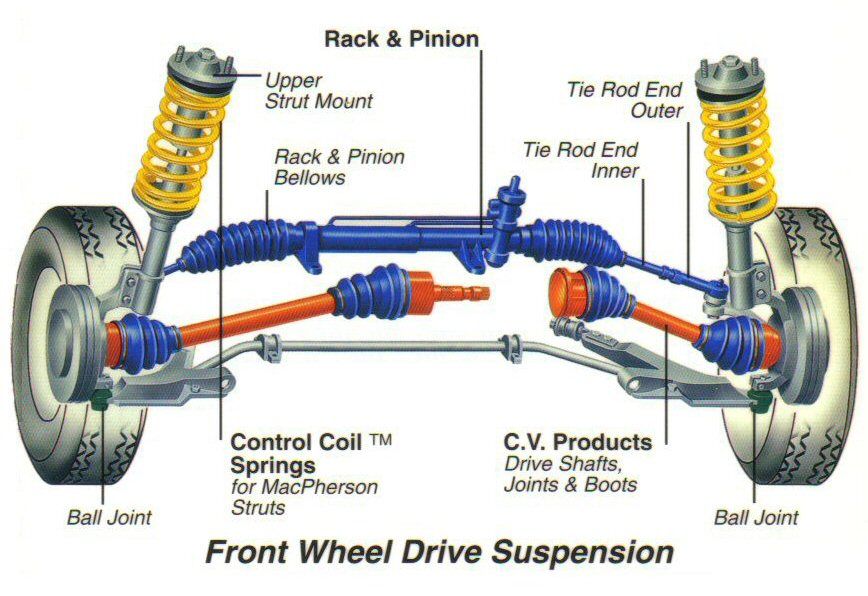 At the same time, the wheels in front also experience additional load from the weight of the engine and gearbox, standing in front of the car.
At the same time, the wheels in front also experience additional load from the weight of the engine and gearbox, standing in front of the car.
By swapping tires, their wear is evened out and the service life is extended. It is recommended to change them every 5000 - 8000 kilometers, or at least every time the oil in the car engine changes. If the vehicle is driven only on weekends, change tires at least once every six months.
First remove the wheels and check that they are not worn to holes, bumps or damage. Check if the rims are not deformed from strong impacts when they hit a pothole on the asphalt. Most often, the deformation occurs on the inside of the rim. From driving fast on a bad road, the disc can become egg-shaped - this is not noticeable to the naked eye. Curved rims cannot be balanced, so ask for the wheels to be balanced when replacing them at the tire shop, if the rim is bent, the master will report this and offer to align the rims for an additional fee.
When examining tires, uneven wear may be observed, i.e. uneven tread wear in different places (see picture). This is more common in older vehicles with suspension systems that wear out and need to be repaired, with frequent aggressive braking and misaligned wheels. The tire does not face straight, so the tread wears unevenly, which affects steering and the vehicle's ability to brake. If the tread is unevenly worn on the inside or outside, the machine probably needs to be aligned. Read how to do it yourself here. It is recommended to check the wheel alignment every 30 thousand kilometers.
Wavy side wall - a bulge on the side of a tire - can result from falling into a deep hole. The tire is pinched, a rupture occurs inside and air enters the rubber layers, as a result, a bump comes out. Left unattended, a bulge in a wheel can lead to a puncture or sudden deflation, resulting in loss of control and an accident.
There are three ways to swap tires. They are only suitable for cars with wheels of the same size and one season. Tires should not be unidirectional, that is, not those that are placed in a certain direction indicated by the manufacturer on the sidewall, based on the tread pattern. If a unidirectional tire is installed incorrectly and it rotates in the opposite direction, this will lead to its rapid wear and damage to the car's ride.
They are only suitable for cars with wheels of the same size and one season. Tires should not be unidirectional, that is, not those that are placed in a certain direction indicated by the manufacturer on the sidewall, based on the tread pattern. If a unidirectional tire is installed incorrectly and it rotates in the opposite direction, this will lead to its rapid wear and damage to the car's ride.
Replacement scheme for front-wheel drive vehicles: front tires are placed back on the same side, and the rear tires are placed in the opposite front corner, for example, the right rear is placed in place of the left front.
Replacing scheme for rear-wheel drive vehicles: rear tires are placed forward on the same side, and front tires are placed in the opposite rear corner, for example, the right front is placed in place of the left rear.
4WD replacement pattern: crosswise all four tires - right front to left rear, left front to right rear, left rear to right front and right rear to left front.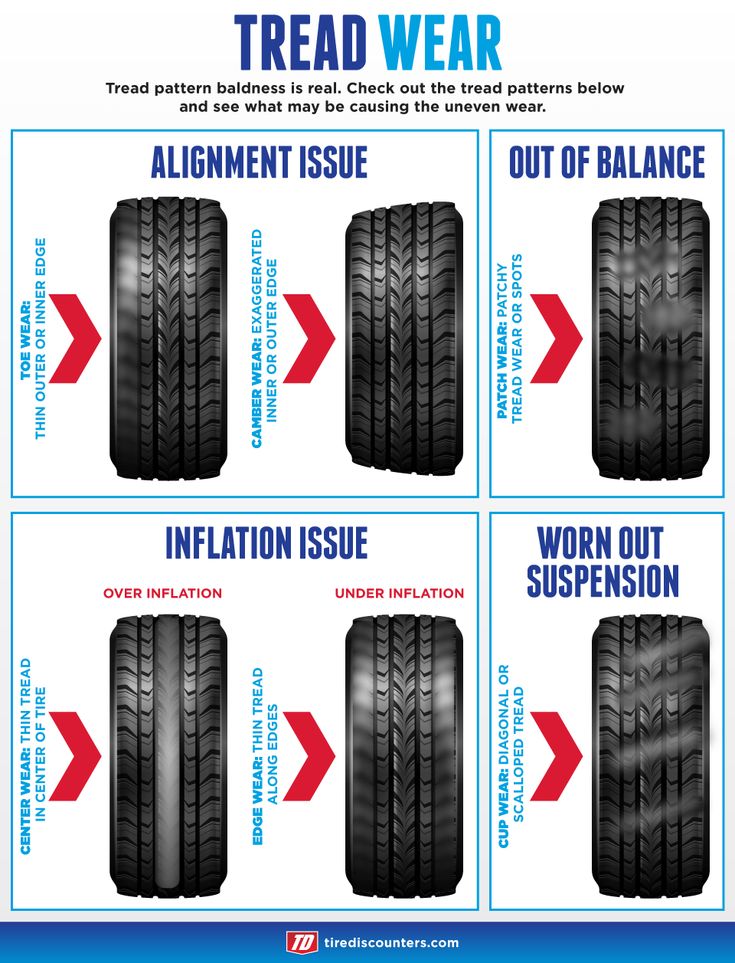
An all-wheel drive vehicle does not mean that tires do not need to be swapped. There is a misconception that on all-wheel drive vehicles, the tread wears out evenly. It is not true. All-wheel drive systems do not always drive all wheels. Transfer cases and electronically controlled differentials can switch power between the front and rear wheels, depending on road conditions and the drive mode the driver has selected. The difference in vehicle weight between front and rear also affects tire wear.
Separately, we dwell on the rule of swapping tires of different sizes (for example, in tuned versions of the BMW 5 Series, the rear tires are placed wider than the front) and unidirectional tires, which should only rotate in a certain direction. If the wheels are of different sizes, then you need to change them from right to left, and left to right. If the wheels are unidirectional, then replacing the cross with a cross is out of the question. Unidirectional tires change right rear with right front, and left rear with left front.